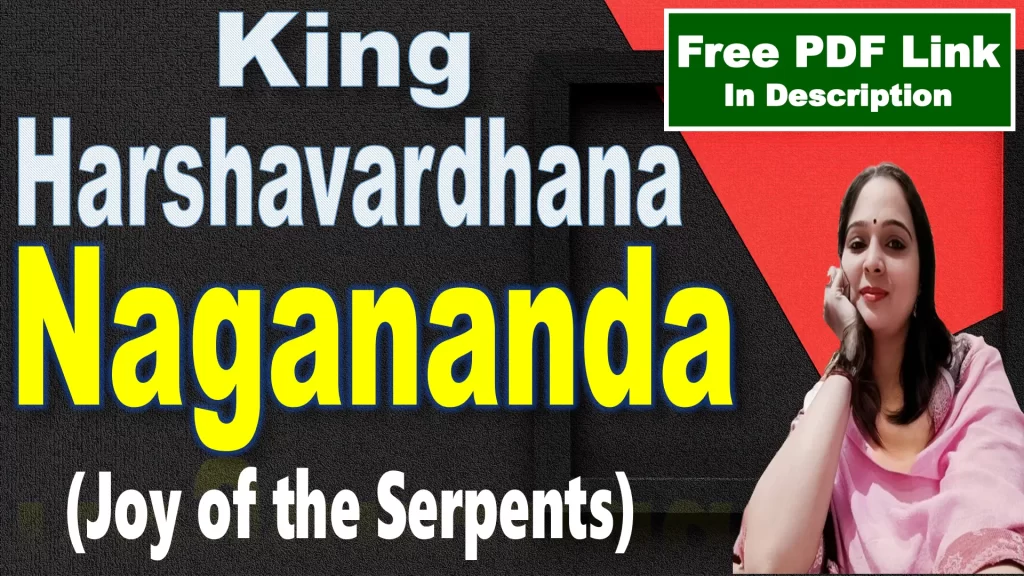
Harshavardhana (Harsha)
Harshavardhana, also known as Harsha, ruled as the Emperor of Kannauj from 606 to 647 CE. He is remembered as one of India’s great rulers, celebrated for his administrative abilities, cultural contributions, and patronage of the arts.
Early Life
Harsha was born in 590 CE in Thanesar (modern-day Haryana, India).
He was the second son of King Prabhakara Vardhana and Queen Yasomati, of the Pushyabhuti dynasty, which was known for its military prowess.
His early education included the Vedas, philosophy, and astrology, and he developed an interest in arts and literature, which shaped his reign.
Ascension to the Throne
Harsha became king at the age of 16 after the death of his elder brother, Rajyavardhana.
He rose to power by avenging his brother’s death and rescuing his sister, Rajyashri, from the Gauda king, Sasanka.
Harsha formed an alliance with Bhaskar Varman, the king of Kamarupa, and defeated Sasanka to establish himself as the ruler of Kannauj.
Empire and Administration
Harsha’s empire extended from Punjab to northern Odisha and from the Himalayas to the Narmada River.
His governance was a blend of direct rule in core regions like Kalinga, Gujarat, Bengal, and the Central Provinces, and feudalism in areas like Kashmir, Sind, and Nepal.
He aimed to unify North India, which had fragmented after the Gupta Empire’s decline.
Despite his success, he faced a major defeat in 637 CE at the hands of Pulakesin II, the Chalukya king.
Patronage of Arts and Literature
Harsha was a notable patron of Sanskrit literature and a fluent writer. His works include the plays:
Nagananda
Ratnavali
Priyadarsika
His reign saw a flourishing of art forms like music, dance, painting, and sculpture.
He attracted artists to his court and established Nalanda University as a center of learning, drawing scholars from across the world. His support for arts and education enriched Indian culture and economy.
Religious Influence
Initially supportive of orthodox Hinduism, Harsha became a devoted Mahayana Buddhist, influenced by the Chinese pilgrim Xuanzang, who chronicled Harsha’s life.
Death and Legacy
Harsha passed away in 647 CE at the age of 57 due to a sudden illness.
His death led to political instability as he left no direct heir. His sister’s son, Arjuna Vardhana, briefly succeeded him but was soon defeated by Tibetan forces, leading to the kingdom’s disintegration.
Despite this, Harsha’s 41-year reign left a lasting legacy in Indian history through his contributions to education, culture, and religion, which continued to influence generations.
CHARACTERS
Jimutavahana (The Protagonist)
Jimutavahana is the central figure of Nagananda, epitomizing self-sacrifice, compassion, and duty.
Personality Traits: Noble, altruistic, and resolute, he dedicates his life to serving others and living according to moral principles.
Actions:
Renounces kingship to care for his aging parents, showcasing filial piety.
Offers himself as a sacrifice to Garuda to save the Naga prince, Sankhachuda, exemplifying courage and selflessness.
Symbolism: Represents the ideal of dharma (duty), rejecting personal desires for the welfare of others.
Malayavati
Malayavati, Jimutavahana’s wife, symbolizes love, devotion, and resilience.
Personality Traits: Pious, loyal, and emotionally strong, she balances her spiritual devotion with her love for Jimutavahana.
Actions:
Her dream of marrying a Vidyadhara prince ties her destiny to Jimutavahana.
Overcomes misunderstandings with Jimutavahana and supports him even in his self-sacrificial decisions.
Symbolism: Embodies faith and strength, providing emotional depth to the play.
Vidushaka (Atreya – The Comic Friend)
Vidushaka provides comic relief while serving as Jimutavahana’s loyal companion.
Personality Traits: Humorous, playful, and light-hearted, he adds balance to the play’s serious themes.
Actions:
Encourages Jimutavahana to embrace worldly pleasures, adding a relatable perspective.
His interactions with other characters, like Shekharaka and Chaturika, bring humor to the story.
Symbolism: Represents the lighter side of life, showing the importance of joy amidst challenges.
Sankhachuda (The Naga Prince)
Sankhachuda embodies innocence, duty, and humility.
Personality Traits: Courageous and resigned to his fate, he shows dignity in accepting his sacrificial role.
Actions:
Comforts his grieving mother despite knowing he is to be sacrificed.
Reluctantly allows Jimutavahana to take his place, showcasing his respect and gratitude.
Symbolism: Represents the oppressed and the victims of unjust traditions.
Garuda (The King of Birds)
Garuda serves as both an antagonist and a symbol of redemption.
Personality Traits: Fierce and initially unyielding, he undergoes a transformation upon witnessing Jimutavahana’s selflessness.
Actions:
Accepts Jimutavahana’s sacrifice but is deeply moved by his courage.
Seeks ambrosia to revive Jimutavahana and the Nagas, showing remorse and redemption.
Symbolism: Represents cosmic justice and the power of atonement.
The Old Woman (Sankhachuda’s Mother)
The Old Woman embodies maternal love and the grief of impending loss.
Personality Traits: Grief-stricken yet loving, she highlights the emotional cost of the Naga sacrifices.
Actions:
Laments her son’s fate and protests against his role in the ritual.
Symbolism: Represents the human suffering caused by cruel traditions.
Goddess Gauri
Goddess Gauri plays the role of a divine intervener, ensuring justice and the fulfillment of destiny.
Personality Traits: Compassionate and powerful, she blesses her devotees and protects righteousness.
Actions:
Ensures the union of Malayavati and Jimutavahana.
Revives Jimutavahana and the sacrificed Nagas, rewarding virtue and ending injustice.
Symbolism: Represents divine grace and the triumph of good over evil.
Mitravasu (Malayavati’s Brother)
Mitravasu is a supporting character who reflects family duty and loyalty.
Personality Traits: Responsible, caring, and practical, he is dedicated to his sister’s happiness.
Actions:
Proposes Malayavati’s marriage to Jimutavahana.
Delivers news of external threats, emphasizing his protective nature.
King Jimutaketu (Jimutavahana’s Father)
King Jimutaketu symbolizes wisdom and renunciation.
Personality Traits: Wise, supportive, and selfless, he sets a moral example for his son.
Actions:
Encourages Jimutavahana’s virtuous choices.
Grieves deeply for his son’s sacrifice, reflecting a parent’s love and loss.
Chaturika (Malayavati’s Maid)
Chaturika adds humor and emotional insight to the play.
Personality Traits: Playful, caring, and observant, she is devoted to Malayavati.
Actions:
Identifies Malayavati’s illness as love for Jimutavahana.
Engages in playful banter with Vidushaka, adding comic relief.
Shekharaka (The Parasite)
Shekharaka is a minor comic character, adding satire and humor to the play.
Personality Traits: Foolish and overzealous, often creating humorous situations.
Actions:
Mistakes Vidushaka for Navamalika, his love interest, leading to comical confusion.
Symbolism: Satirizes human folly and provides contrast to the more serious characters.
Navamalika (Shekharaka’s Love Interest)
Navamalika is a minor character who serves as a foil in the comic subplot.
Personality Traits: Graceful and clever, though her role is limited.
Actions:
Shekharaka’s affection for her drives humorous situations.
Chamberlain
The Chamberlain is a supporting character who represents duty and loyalty.
Personality Traits: Dutiful and diligent despite his age, he carries out his tasks with care.
Actions:
Delivers the red garments to Malayavati and Jimutavahana, aiding the plot progression.
Doorkeeper (Sunanda)
The Doorkeeper represents communication and practicality.
Personality Traits: Observant and responsible, he ensures messages are conveyed effectively.
Actions:
Provides updates and guidance to various characters, facilitating the narrative.





